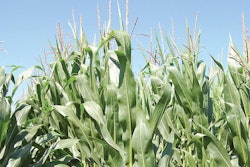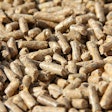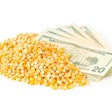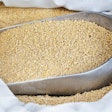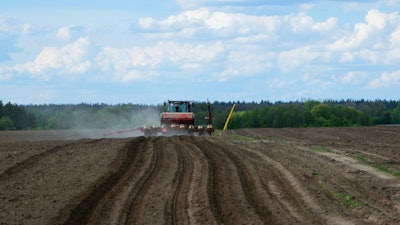
Further cuts to US corn crop likely as wet spring weather delays planting, experts say
The U.S. Department of Agriculture (USDA) is projecting record corn prices this season after slashing corn production estimates in the U.S. and Ukraine, causing global corn production to fall below anticipated consumption.
On-farm corn prices for the 2022-23 crop are expected to reach US$6.75 per bushel, the highest seen since the last record set in 2012-13, according to the USDA’s monthly world markets and trade report. The May report, the first to issue projections for the coming fall’s crop, cut this year’s likely production in Ukraine by half compared with last year’s figures — resulting in estimates analysts said may still be generous.
But the projected cuts to production in the U.S. also took analysts by surprise. While planting surveys released earlier this year anticipated a decline in U.S. corn production in favor of greater soybean acreage, the USDA is now projecting an average corn yield of 177 bushels per acre — the same figure it used in 2021. Favorable conditions could have supported an estimate of 179 bushels per acre, according to Michael Langemeier, associated director of Purdue’s Center for Commercial Agriculture. But a slow start to planting throughout much of the U.S. likely justified the USDA’s less optimistic take, he said during a webinar presentation on May 16.
The rainy weather and shortened growing season are likely to prompt even more farmers to trade corn acreage for soybeans, StoneX chief commodities economist Arlan Suderman told the U.S. Soybean Export Council. And the U.S was already on track to grow its largest soybean crop on record, primarily due to the increased cost of farm inputs such as fertilizer, according to USDA’s May reports.
Nathan Thompson, an associate professor of agricultural economics at Purdue University, estimated that the odds of corn prices falling below US$6 per bushel by the end of this year were less than 20%.
In a typical year, with corn prices escalating as fast as they have, one would expect to see more farmers pivot to corn, Suderman said.
“But it’s interesting, the overlay with the fertilizer shortages that we have, and the wet spring,” he said.
This isn’t the only dynamic in play this season, Suderman continued. While Ukraine has succeeded in increasing its export output 20% by shipping more grain by rail, USDA’s estimate of “half a crop” from Ukraine this year looks good but may be slightly too rosy, Suderman said.
“I’m hearing reports of chemical shortages — fuel shortages, fertilizer shortages,” he said. Other reports, he said, tell of agricultural infrastructure being targeted by Russian soldiers, with grain elevators destroyed and equipment stolen.
And then there’s China, which Suderman said seems poised to increase its consumption of soybeans and especially corn this fall.
“They’re worried about short corn supplies in the world and want to make sure they get their share of supplies before others do, and they are going to buy it even if they don’t need it,” he predicted.
Xiaoping Zhang, greater China regional director for the U.S Soybean Export Council, agreed with Suderman’s assessment. Chinese farmers have suffered huge financial losses from a combination of rapid cost increases and falling pork prices triggered by African swine fever and COVID-19, he said. But the country is expected to relax COVID restrictions this summer and consumers are eager to resume travel and entertainment.
“If we can get a clue of the demand growth from several factors such as the expected stepping off of the bottom in the pig farming cycle, the expanding poultry industry, and the reopening of economic activities later this year,” he said, “even with a 1-1.5% drag on GDP due to major lockdowns for a couple of months this spring, the volume of economic growth will still be enormous.”


